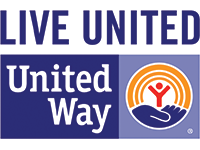U.S. Economic Mobility Improving Very Slowly
 •
•
Neil Shah, Staff Reporter
More than four years into the economic recovery, upward mobility in the U.S. is climbing — but very, very slowly.
A new report by Opportunity Nation, a network of over 250 nonprofit, business and other organizations, analyzed 16 economic and demographic indicators and found that America’s overall “Opportunity Score” — a broad measure of economic mobility — is now 50.9, barely higher than 50 in 2012 and 49.59 in 2011. (This “Opportunity Index,” a joint project with Measure of America, began in 2011.)
About half the nation geographically-speaking — 24 states — showed declines in their scores or no improvement, the report said, even though the nation’s recession, which began in December 2007, ended in June 2009.
Median household incomes declined between 2011 and 2013 across the country to an inflation-adjusted $48,958 from $51,050, the report said. Measures of poverty and income inequality increased over this period, even as the nation’s unemployment rate fell. A gauge of affordable housing — the share of U.S. households spending less than 30% of their income on housing — dropped slightly to 62.2% in 2013 from 62.6% in 2011, though the proportion with high-speed Internet rose to 67.8% from 63.9%.
The report, which crunches state and county numbers on unemployment, incomes, and poverty along with indicators related to education and civic life, suggests many Americans, especially those with lower incomes, continue to face an uphill climb when it comes to improving their economic status — at least compared with Canada and some European countries.
The stagnation nationwide on economic mobility masks considerable differences by state — which means it matters greatly where you live.
Vermont had the U.S.’s highest Opportunity Score, at 65.9, followed by Minnesota, North Dakota, New Hampshire Nebraska and Iowa. (North Dakota is enjoying an oil-and-gas boom, while Nebraska and Iowa are benefiting from the nation’s relatively strong farm economy.)
At the bottom of the list were Nevada — which experienced one of the nation’s biggest housing-market crashes — Mississippi, New Mexico, Louisiana, Alabama and Arizona. (Nevada’s score was 37.9)
The biggest positive shifts in the last two years have been in the District of Columbia — which saw its score rise to 54.3 from 50.88 — along with Kansas, California, Texas, Colorado, Washington, and Utah. Kentucky and South Carolina also saw improvements that beat the nation’s overall gains. Connecticut and New Mexico, meanwhile, saw statistically significant declines over the past few years.









